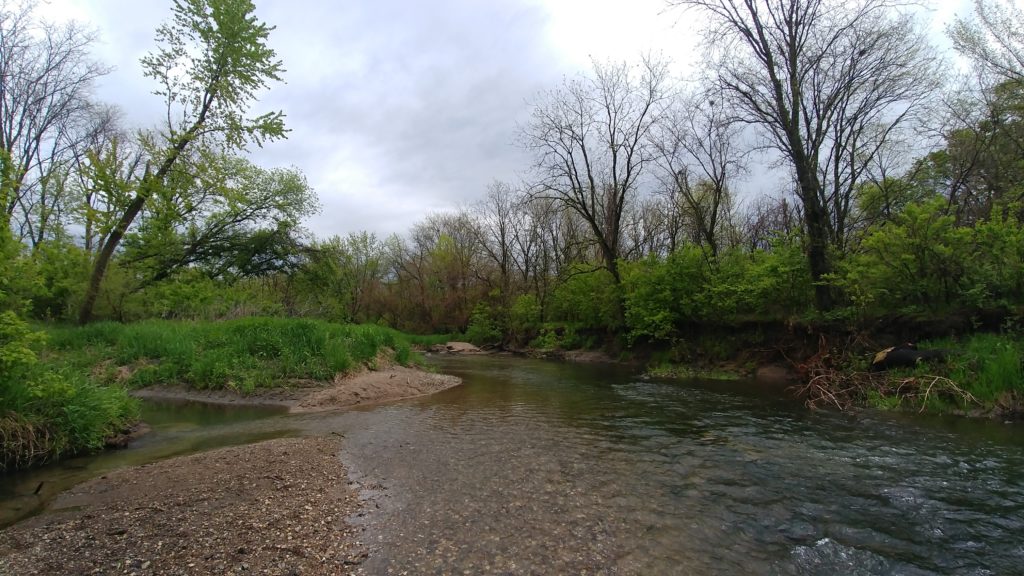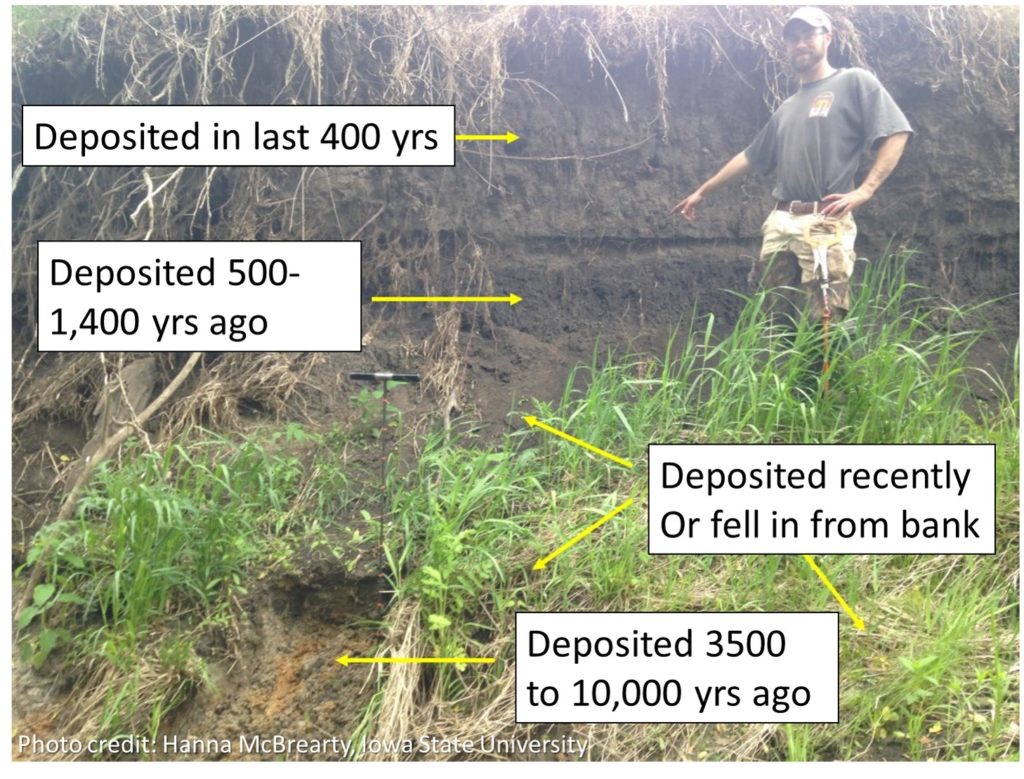
Legacy Sediment for Fourth Graders
For Iowa History Month, I’d like to talk about legacy sediment—historic erosion that has a big influence on sediment, phosphorus, and fisheries in rivers today. For a change of pace, this article is written at the fourth-grade reading level. I like big words like “fluvial geomorphology” but not everyone does. Okay! Let’s have some fun learning!
The faster the water moves, the more stuff it can carry. Fast-moving water washes away the tiny stones (sand and silt). It leaves behind the bigger stones (gravel). Slower moving water washes away the silt but leaves behind the sand. If a beaver or a person dams up the water and it really slows down, even the silt settles out. That’s why mountain streams have rocky bottoms but lowland streams have muddy bottoms. It’s also why there are sand bars on the inside of river bends where the water moves more slowly.

Plants’ roots and leaves can keep dirt from washing away, and so do the tiny things that live on plant roots. They actually make a glue that holds the dirt together! There’s been a few times when dirt and rocks moved a lot faster than normal because there weren’t any plants growing. Twelve thousand years ago, there weren’t any plants in my part of Iowa because the land was covered in a big sheet of melting ice. It happened again 190 years ago when farmers started moving in and plowing up the grass to grow crops. The ground was bare for most of the year, so dirt washed off the hills and filled up the valleys. 90 years ago, farmers realized this was a problem and got more careful about how they plowed. But then 50 years ago some of them forgot and weren’t as careful. But they remembered again, so it’s better now. (Read more about this history here)

There’s still lots of soft mud in the valleys from those days. That’s a problem because the water moves a lot faster now. Partly that’s because there’s more pavement and fewer marshes. Partly that’s because people straightened out some of the curves in the rivers. The fast water hits the soft mud and makes little canyons all over Iowa. The water can’t get out of the canyons unless there’s a really big flood so it almost never slows down. The canyons are not as pretty as the Grand Canyon and the fish don’t like them as much. The soft mud in the river valleys also has fertilizer in it that can make the water turn green. The fish don’t like that either.

If you like fish and want the ugly canyons to turn into normal-looking rivers you have two choices.
1. You can stop dumping concrete on the river banks and wait. The water will keep washing away dirt on the outside of the river bend. That makes the valley wider. Some day, the bank will cave in. That will make the valley less steep. Some houses and bridges might fall into the river too. That would be exciting!
2. You can use a backhoe to move the dirt around so the valley isn’t as steep and narrow. I like that idea better. It would also be a good idea to have trees and grass near the river to hold the dirt together.

If you like reading about science and engineering with very small words, I recommend a funny book called Thing Explainer by Randall Munroe.
If you want to learn the big words too, then I think you should listen to Jeff Kospaska at the Iowa Department of Natural Resources, Tom Isenhart at Iowa State University, or Billy Beck at ISU Extension. I learned a lot from them!
